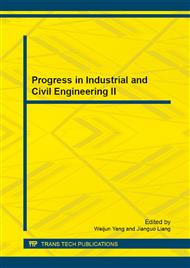p.602
p.607
p.611
p.617
p.621
p.633
p.638
p.644
p.648
Stability Analysis of Dangerous Rocks on the Slope of a Hydropower Station
Abstract:
Dangerous rocks are among the most significant factors in analyzing the stability of high slopes, and are the main geological hazards on such slopes. These rocks are typical spatial blocks. The unstable failure of dangerous rocks poses evident spatial features. Consequently, their stability should be calculated by considering it as a three-dimensional (3-D) problem. In this research, the general block method of fractured rock mass and 3-D discontinuous deformation analysis (DDA) are used to study the stability of dangerous rocks on the slope of a hydropower station. The general block method of fractured rock mass is used to generate dangerous rocks and to assess the geometric mobility of blocks. The progressive unstable failure of dangerous rocks is also analyzed. Moreover, 3-D DDA is implemented to examine the stability of dangerous rocks, including the regularity of their unstable failure. The failure sequence of each batch of blocks estimated by general block theory is the same as that in the results of 3-D DDA. The decrease in the shear parameters of the structural plane shortens the time interval of failures, but increases the number and capacity of blocks.
Info:
Periodical:
Pages:
621-629
Citation:
Online since:
September 2013
Authors:
Price:
Сopyright:
© 2013 Trans Tech Publications Ltd. All Rights Reserved
Share:
Citation:


